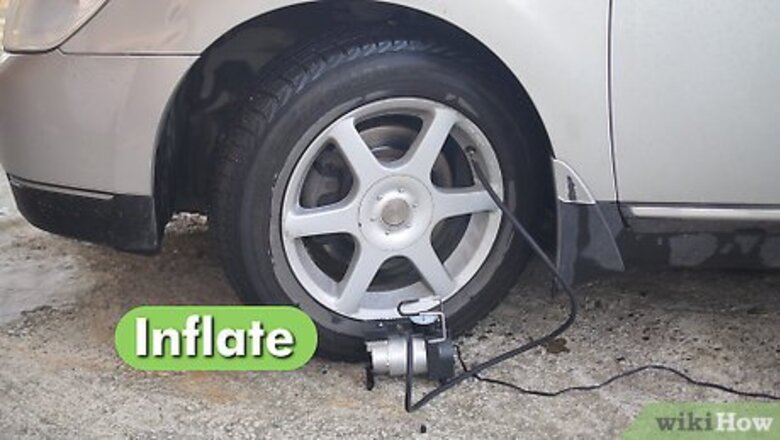
views
- Find the leak by listening and feeling for escaping air around the tire. Or, coat the tire in soapy water and look for the spot that bubbles intensely.
- Turn the tire so that the leak points upward and remove any foreign objects with pliers. Attach the sealant can to the tire via the air nozzle.
- Press the button on the sealant can to release its contents. Detach the can, then drive your car for 5 minutes to distribute the sealant in the tire.
Finding the Leak
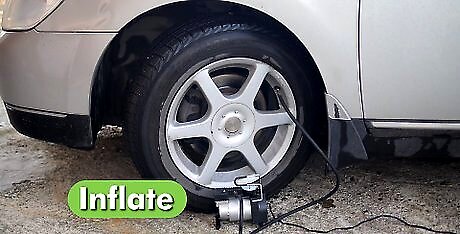
Inflate the tire. In order to find a leak the tire must be properly pressurized. You should inflate your tire with air until it reaches the appropriate pressure (measured in psi) specified in your vehicle's service manual.
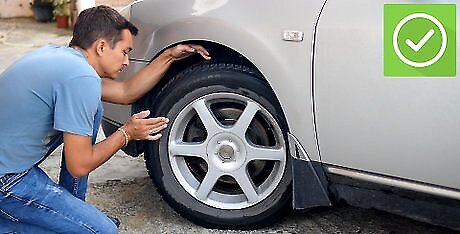
Visually inspect the tire. Before moving on to more time consuming techniques, you should take a moment to look at your tire. If you notice any holes, cuts, or objects protruding from tire then you have found your leak.

Listen for a hissing sound. Even if you aren't able to see the problem right away you might be able to hear it. A hissing sound is a clear sign that air is leaking from your tire, and can help you locate the leak.
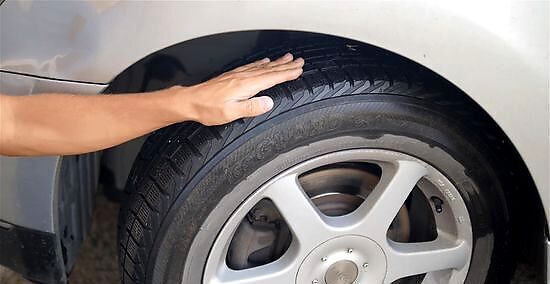
Feel around the tire for air. If you run your hands over the tire carefully you may feel the leak even if you can't hear or see it.
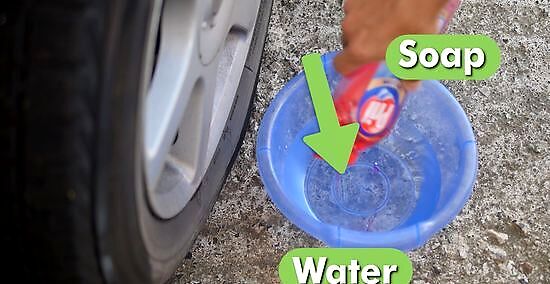
Mix soap and water. If you followed the steps above and you were not able to easily find the leak don't fear. Spraying the tire with a little soapy water or window cleaner may help. If you see bubbling at any place on the surface of the tire then you have found your leak.

Cover the tire with the soap and water solution. You can use a spray bottle to spray the tire, or if a spray bottle isn't available you can just pour the mixture over the tire.
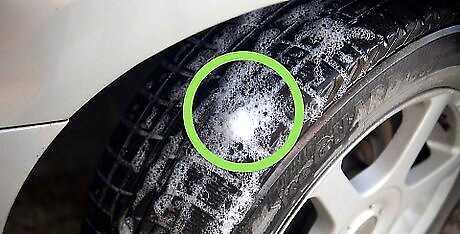
Watch for bubbles. As air escapes the tire and encounters the soapy water mixture it will form soap bubbles. If you notice the soapy water bubbling at any particular place on the tire, you have found your leak.
Fixing the Leak with Tire Puncture Sealants

Read the directions on the can of sealant you have brought. Various manufacturers have slightly different steps and required amounts you should put in. However, there are some steps that are generally the same. Keep in mind that newer tire models usually have tire pressure monitoring systems. Using tire puncture sealants can sometimes damage or destroy these systems.

Pull out any object that has punctured your tire. This may or may not be necessary depending on why your tire is flat.
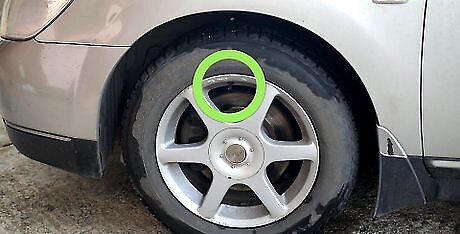
Turn the wheel until the valve is at the top of the wheel. Unscrew your valve cap. You will put the sealant in the same way that you would inflate your tire with air.
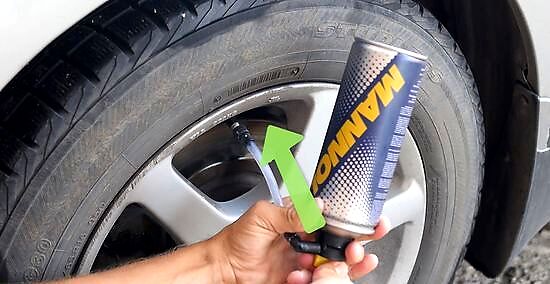
Attach the nozzle of the product to the valve stem. Once you have it on securely, press a button to release the contents.
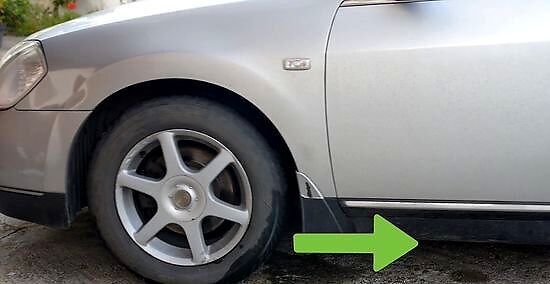
Drive your car. You need to drive your car to rotate the tire. This allows the sealant to be distributed evenly inside the tire and prevents it from forming a heavy lump inside the tire.
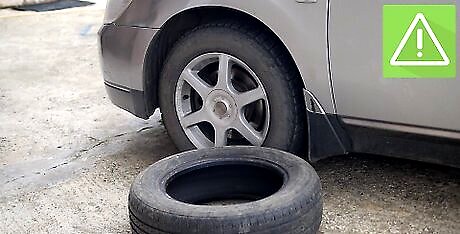
Replace your tire. Tire sealants are great to bail you out in a major crisis. Unfortunately they are only good for 3 days or 100 miles, whichever comes first. You should replace your tire before then to avoid possible problems.
Using a Tire Plug Kit
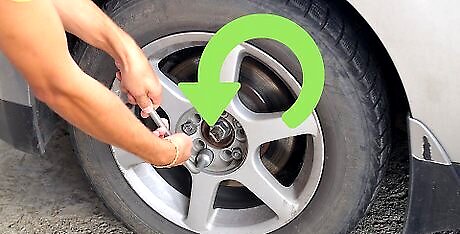
Loosen the lug nuts with a lug wrench (tire iron) or impact wrench. It is important to remember to loosen, or break, the lug nuts before you jack up the vehicle. This way the weight of the vehicle is still on the wheels and it prevents them from spinning dangerously while you turn the lugs.
Jack up the car. Once the lugs have been loosened, it will be necessary to jack the car up so that the wheels can be removed. As mentioned above, this should be done on level concrete or some other hard, level surface. Some important things to remember when jacking up the car are: Your service manual will recommend jacking points The most common way to elevate the car is a floor jack, or trolley jack. If you are unsure how to use one visit Lift a Car Using a Trolley Jack. You should use jack stands to stabilize the car. A good tutorial on jack stands can be found at Use Jack Stands. If you have access to a hydraulic lift it will save you time.
Remove the lug nuts and pull the wheel off of the hub. At this point, the lugs may be loose enough to remove by hand. If not, finish removing the lugs with the lug wrench or impact wrench. Once the lugs are removed, pull the wheel off of the wheelbase. If you are uncomfortable removing a wheel, read about how to Remove Lug Nuts and Tires.
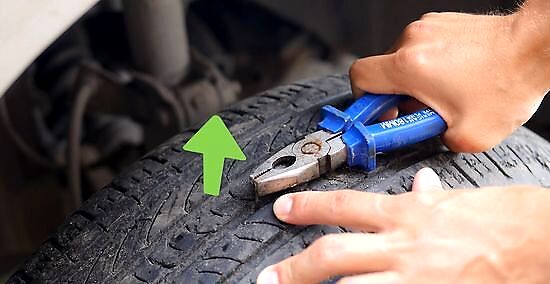
Pull out any protruding object with a pair of pliers. It is also good practice to mark the spot with chalk or markers. When there's no protruding item, follow the above steps for locating a leak.
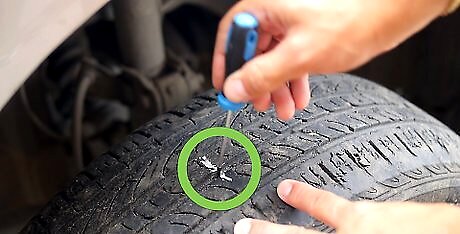
Clean the hole with the rasp tool contained in the tire plug kit. This is done by inserting the tool in and out of the hole quickly. This also roughens the area so the fix will hold.
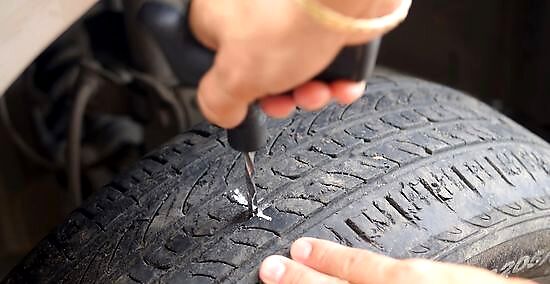
Thread the plug through the center of the insertion tool. Both of these pieces can be found in your tire repair kit. This is sometimes difficult and requires squeezing down one end to make it fit though the hole first.
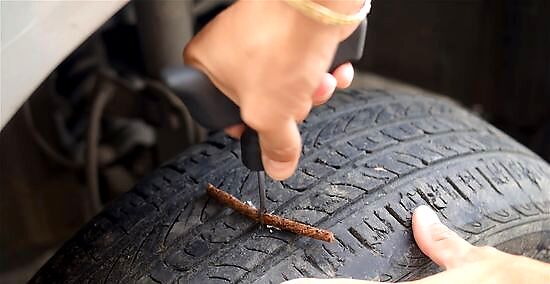
Use the insertion tool to force the plug into the hole. There should be roughly ½” of plug protruding from the tire. If your kit came with an adhesive, such as rubber cement or glue, apply it to the plug before inserting. This will lubricate the plug, making it easier to push in. The adhesive will also promote a better seal.
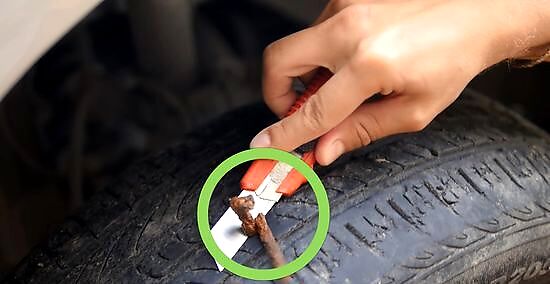
Cut away the excess plug material from the tire surface. Before doing this, you should let any adhesives used dry for at least one minute.
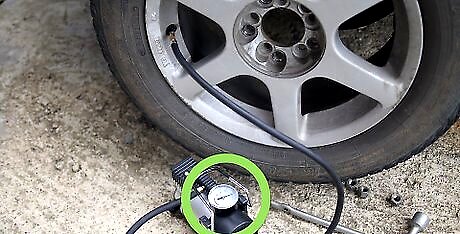
Pump air into the tire. Use a tire gauge to check that the tire is at the manufacturer recommended air pressure.
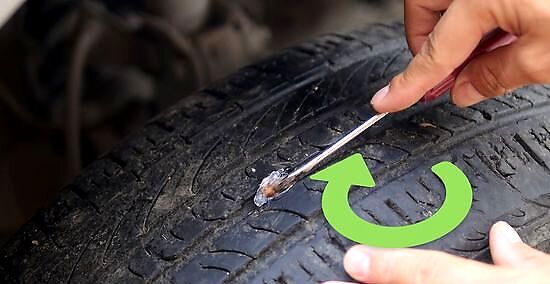
Apply some soap mixture onto the plug. This will allow you to check the seal to make sure it is holding. If it isn't holding, add a little cement or retry using another plug.
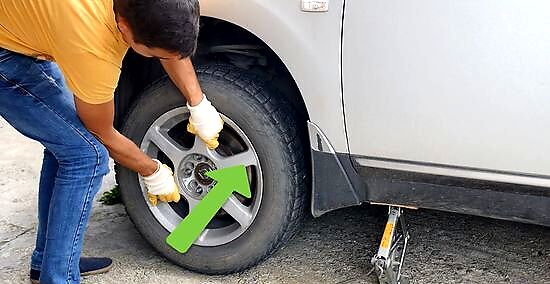
Re-install wheel. You should slide the wheel back onto the wheelbase and thread the lug nuts on tight enough to hold wheel in place while the car is still on the jackstands.
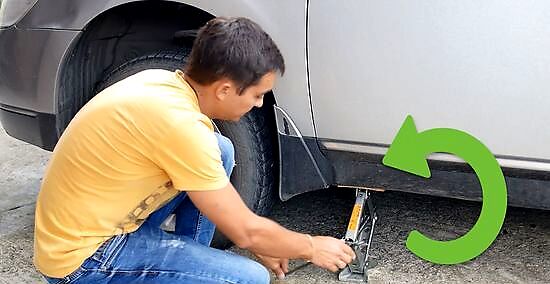
Lower the vehicle to the ground. Use the floor jack to lift the vehicle off of the jackstands. Remove the jackstands and lower the vehicle with the floor jack.
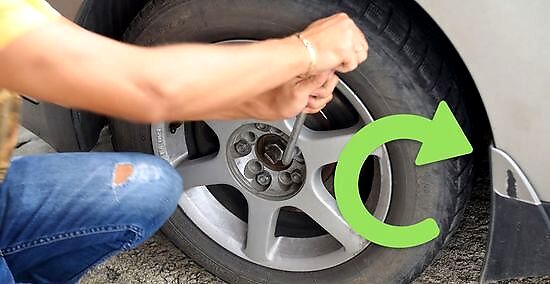
Tighten the lugs to the specified torque. Once the weight is back on the wheels, use a lug wrench or impact wrench to tighten the lugs to the proper torque specifications in your service manual. Be sure to tighten lugs in a star pattern.

Replace the tire. While a plug can provide more stability than tire sealants, it is not a forever solution. It is suggested that you replace the tire within the next 20,000 miles. For a fix that's more long-term, have a professional mechanic plug and repair your tire.




















Comments
0 comment